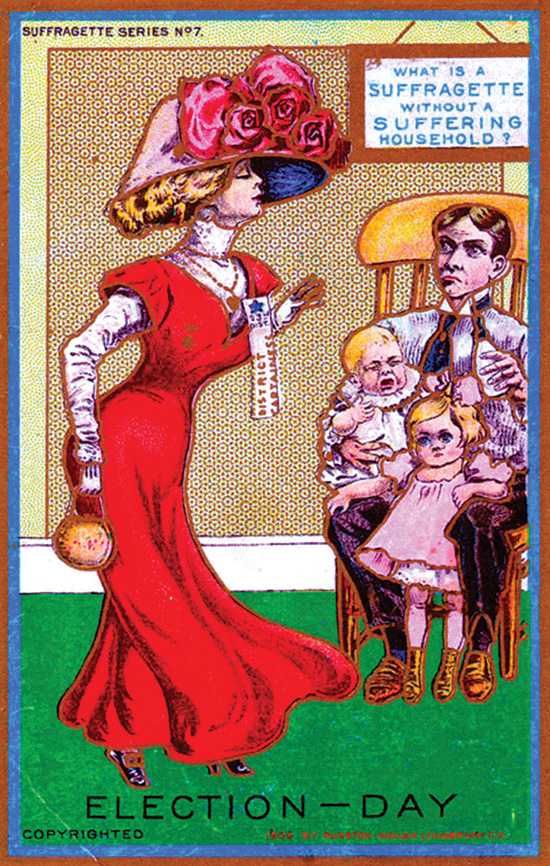History and Context
Page Content
 A postcard lampoons the women’s movement by portraying a woman seemingly more interested in voting than in looking after the wellbeing of her family. Opposition to woman suffrage was fierce among traditional groups. Many feared that voting would distract women from their “domestic duties” or create family dissension. Others were concerned that women were not capable of voting responsibly or would be corrupted by the process. Some worried that women would form a solid party and outvote men. And, many men—raised and accustomed to dictating events in the political sphere—simply saw no reason to give up any power to women without a fight. (Courtesy of Oregon Historical Society)
A postcard lampoons the women’s movement by portraying a woman seemingly more interested in voting than in looking after the wellbeing of her family. Opposition to woman suffrage was fierce among traditional groups. Many feared that voting would distract women from their “domestic duties” or create family dissension. Others were concerned that women were not capable of voting responsibly or would be corrupted by the process. Some worried that women would form a solid party and outvote men. And, many men—raised and accustomed to dictating events in the political sphere—simply saw no reason to give up any power to women without a fight. (Courtesy of Oregon Historical Society) The history of the struggle for woman suffrage in the United States is one of slowly overcoming powerful forces that protected male privilege for centuries in nearly every aspect of life—politics, legal affairs, economics, and more. The path was filled with obstacles and there were numerous dead-ends, particularly for women of color. But suffrage leaders were nothing if not persistent. They poured countless hours into organizing, writing, lecturing, marching, and other activities to turn public opinion in their favor. These pages explore the factors and challenges related to winning the right to vote.